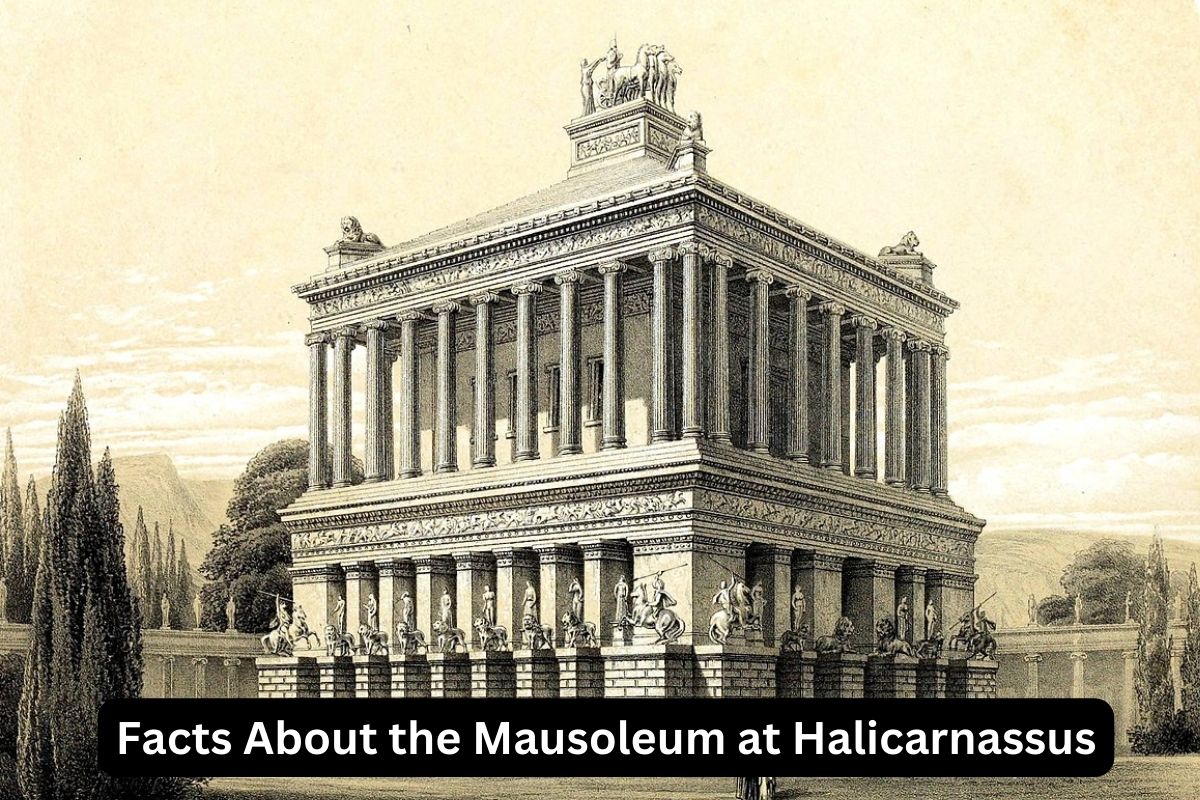Welcome to Facts Vibes! Get ready to uncover intriguing facts about the Mausoleum at Halicarnassus. Discover the captivating history, remarkable architecture, and fascinating details of this ancient wonder. Join us as we delve into the wonders of one of the Seven Wonders of the Ancient World.
The Marvelous Mausoleum at Halicarnassus: A Historical Wonder
The Marvelous Mausoleum at Halicarnassus is a historical wonder that showcases the remarkable architectural and artistic achievements of the ancient world. This monumental structure, commissioned by Queen Artemisia II in honor of her husband Mausolus, was a groundbreaking blend of various architectural styles and innovative decorative elements. Its magnificent sculptures and intricate reliefs adorned the exterior, depicting scenes from mythology, battles, and everyday life.
The mausoleum’s grandeur and size were unmatched in its time, representing a significant cultural and artistic milestone. It stood as a testament to the power and wealth of the Hellenistic rulers and their inclination towards patronizing monumental building projects as symbols of their legacy. The Mausoleum at Halicarnassus also influenced subsequent architectural endeavors, leaving a lasting impact on the evolution of monumental tomb construction.
Throughout history, the mausoleum has captured the imagination of scholars, artists, and travelers, becoming a source of inspiration for numerous artistic and architectural works. Although the original structure no longer stands, its legacy endures as an emblem of human creativity and ingenuity from antiquity. The enduring fascination with this historical wonder continues to fuel scholarly research and public interest, preserving its significance for generations to come.
Most popular facts
The Mausoleum at Halicarnassus was a tomb built for Mausolus, the satrap of Caria, in 353 BC.
The Mausoleum at Halicarnassus was a tomb built for Mausolus, the satrap of Caria, in 353 BC.
It was designed by the renowned ancient Greek architects Satyros and Pythius.
The structure was designed by the renowned ancient Greek architects Satyros and Pythius.
The mausoleum was adorned with intricate sculptures and reliefs by four famous sculptors: Bryaxis, Leochares, Scopas, and Timotheus.
The mausoleum was adorned with intricate sculptures and reliefs by four famous sculptors: Bryaxis, Leochares, Scopas, and Timotheus.
Standing at around 45 meters in height, the mausoleum was considered one of the Seven Wonders of the Ancient World.
The mausoleum, standing at around 45 meters in height, was considered one of the Seven Wonders of the Ancient World.
The structure featured a stepped pyramid, colonnades, and a massive stone chariot at the top.
The structure featured a stepped pyramid, colonnades, and a massive stone chariot at the top.
Many of the original sculptures and friezes from the mausoleum are now housed in the British Museum.
Sure! Many of the original sculptures and friezes from the mausoleum are now housed in the British Museum.
The term “mausoleum” originated from the name of this grand tomb.
The term “mausoleum” originated from the name of Mausolus, a grand tomb.
The mausoleum was located in the ancient city of Halicarnassus, which is modern-day Bodrum, Turkey.
The mausoleum was located in the ancient city of Halicarnassus, which is modern-day Bodrum, Turkey.
After Mausolus’ death, his wife Artemisia II continued the construction of the mausoleum as a tribute to him.
Artemisia II continued the construction of the mausoleum after Maussolus’ death as a tribute to him.
The mausoleum suffered damage from earthquakes over the centuries before it was completely demolished in the medieval period.
The mausoleum suffered damage from earthquakes over the centuries before it was completely demolished in the medieval period.
Some of the remains of the mausoleum were used in the construction of Halicarnassus Castle by the Knights of St. John in the 15th century.
The remains of the mausoleum were used in the construction of Halicarnassus Castle by the Knights of St. John in the 15th century.
Excavations at the site have revealed various artifacts and architectural elements from the original mausoleum.
Excavations at the site have revealed various artifacts and architectural elements from the original mausoleum.
The construction of the mausoleum utilized a mix of architectural styles, including Greek, Lycian, and Egyptian influences.
The construction of the mausoleum utilized a mix of architectural styles, including Greek, Lycian, and Egyptian influences.
The mausoleum’s impressive size and ornate decorations reflected the power and wealth of Mausolus and Artemisia II.
The mausoleum’s impressive size and ornate decorations reflected the power and wealth of Mausolus and Artemisia II.
It is believed that the construction of the mausoleum took approximately 12 years to complete.
It is believed that the construction of the mausoleum took approximately 12 years to complete.
In conclusion, the Mausoleum at Halicarnassus stands as a remarkable testament to ancient craftsmanship and architectural innovation. Its historical significance and lasting impact on art and architecture make it a compelling subject for further exploration. The legacy of this extraordinary structure continues to inspire awe and admiration, offering a window into the rich history of the region and the creative ingenuity of the past.
